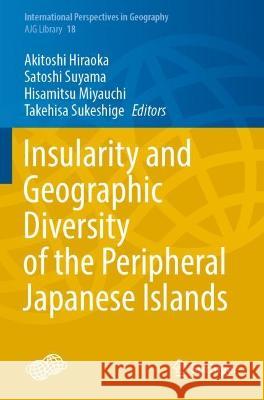Insularity and Geographic Diversity of the Peripheral Japanese Islands » książka
topmenu
Insularity and Geographic Diversity of the Peripheral Japanese Islands
ISBN-13: 9789811923180 / Angielski / Miękka / 2023
Insularity and Geographic Diversity of the Peripheral Japanese Islands
ISBN-13: 9789811923180 / Angielski / Miękka / 2023
cena 605,23
(netto: 576,41 VAT: 5%)
Najniższa cena z 30 dni: 578,30
(netto: 576,41 VAT: 5%)
Najniższa cena z 30 dni: 578,30
Termin realizacji zamówienia:
ok. 22 dni roboczych
Dostawa w 2026 r.
ok. 22 dni roboczych
Dostawa w 2026 r.
Darmowa dostawa!
This book clarifies the geography of the peripheral Japanese islands from a variety of angles. The islands are distributed in the tropical and cool temperate zones, and the most distant inhabited islands are more than 1,000 km from the mainland. In the past, they were Japan's frontier, close to neighboring countries. However, during Japan's modernization process, the islands were positioned as backward regions, supplying food, resources, and labor. Today, the islands are considered to be on the periphery of Japan, with lifestyles different from those of the mainland. The islands are also getting attention as sightseeing locales and emigration regions attracting those who prefer country life—an image of the islands that has been created by the romanticized gaze from the Japanese mainland. The authors describe the various forms of the outlying Japanese islands and at the same time discover their common regional characteristics, as defined by the view from the mainland.











